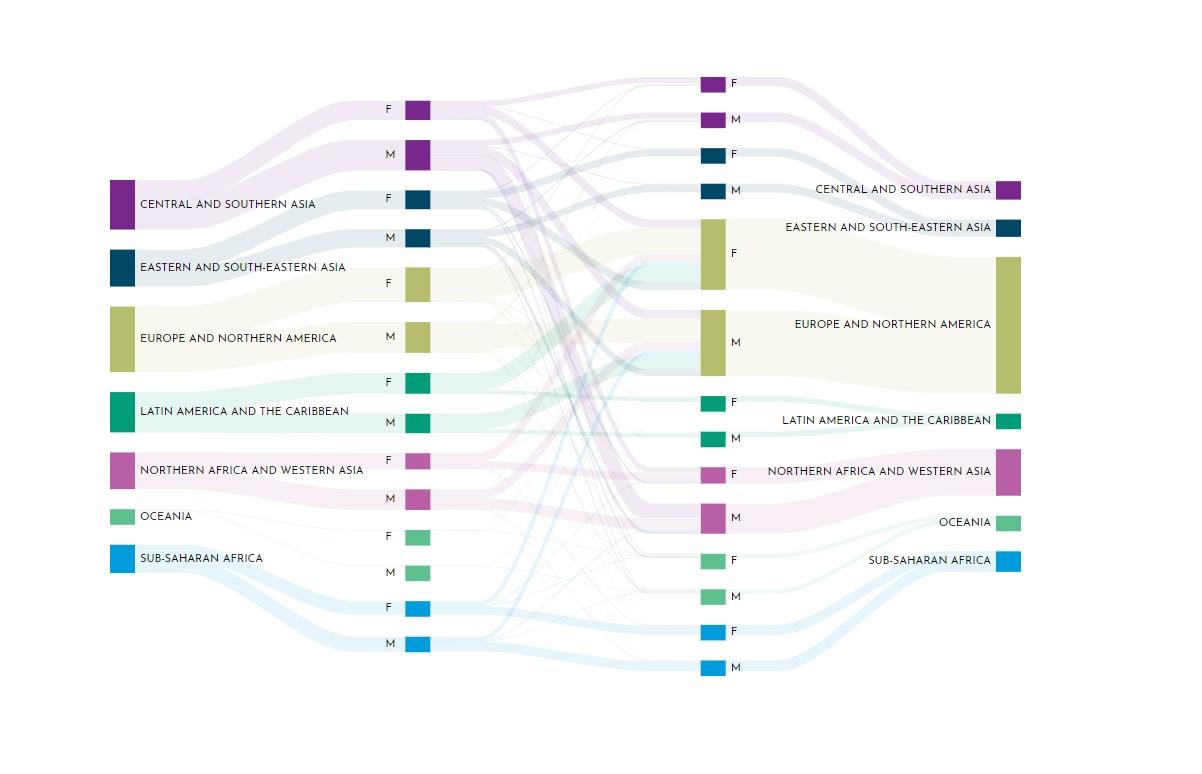Source: UN DESA (United Nations Department of Economic and Social Affairs). 2019. “International Migrant Stock 2019.” Accessed 12 December 2019.
Note: Data on international migrant stock are presented in the 2019-2020 edition of Progress of the World's Women using UN DESA 2017 figures. This interactive has been updated to reflect UN DESA 2019 figures. Destination figures does not include data from ‘Other North’ and ‘Other South’ as those cannot be assigned to a particular geographic region.
Migration is a key theme of Progress of the World’s Women 2019-2020. Chapter 7, Families on the Move, looks at migration as a major force affecting family life and how women live in families. Families migrate for reasons that are diverse and complex: for freedom from violence, to reunite with family, escape poverty and seek out employment or livelihood opportunities. Yet, migrant women face specific vulnerabilities – they may be subjected to sexual abuse in transit, as well as upon arrival in the destination country. They are often unable to escape family violence, particularly if their migration status is tied to their spouse. Migrant women are also often likely to work in sectors that are precarious and poorly paid. The report calls on governments to implement policies that support migrant women and their families and ensure their human rights, irrespective of their legal status.
The interactive graphic below depicts a broad picture of international migration around the world, showing where the world’s migrants come from and where they have moved. It also shows that international migration is largely intra-regional - the majority of people migrating move within their own regions.

